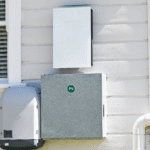Smart Solar Offset Guide for Florida: Plan for Monthly Net Metering and Long-Term Growth
When building a solar system in Florida, a smart solar offset is no longer about matching your yearly usage. With monthly net metering replacing annual credit rollover, homeowners must rethink how much solar they really need—and when they need it. This guide will help you size your system strategically to beat peak bills and stay future-ready.
📘 Chapter 1: The Big Shift – From Annual to Monthly Net Metering
Florida utilities like OUC no longer allow annual net metering. Instead, solar credits now expire at the end of each billing cycle. That means if your solar system overproduces in April, those extra credits can’t be used in July. This change redefines what “100% offset” really means—because annual offset no longer protects you from high summer bills.📗 Chapter 2: Why 100% Offset Doesn’t Work Anymore
In the past, a system that matched your yearly energy usage was enough. But now:- Overproduction in low-usage months (like April) can’t be carried forward
- Underproduction in high-usage months (like July) means you pay the difference
📙 Chapter 3: Solar Production vs. Consumption in Florida
Here’s how solar output and energy use typically compare in Florida:| Month | Solar Output (20 kW) | Consumption |
|---|---|---|
| Jan | ~1,400 kWh | ~1,400–1,600 kWh |
| Mar–May | ~1,850–2,100 kWh | ~1,000–1,400 kWh |
| Jun–Jul | ~2,000–2,050 kWh | ~1,800–2,200 kWh |
| Sep–Oct | ~1,700–1,800 kWh | ~1,200–1,600 kWh |
| Dec | ~1,400 kWh | ~1,300–1,500 kWh |
📕 Chapter 4: Overproduction – Not a Waste, But a Strategy
With monthly net metering, extra production in spring may be lost at the end of the billing cycle. But overproducing slightly is smart—it ensures you don’t have to buy electricity during the most expensive months. Example:- April: +900 kWh (surplus)
- July: –200 kWh (shortfall)
📘 Chapter 5: The Smart Offset Range (110–120%)
To protect yourself, size your solar system to produce about 110–120% of your current annual usage. This covers:- Monthly net metering limitations
- Panel degradation over time (~0.5%/year)
- Future energy needs (EVs, pool, electric appliances)
📗 Chapter 6: Long-Term Planning – The Next 15 Years
Solar panels slowly lose efficiency. At 0.5% per year, that’s about 7–8% over 15 years. Meanwhile, your usage may increase as you add an EV or electric pool pump. A slightly oversized system ensures you stay covered in the future without costly upgrades.📕 Chapter 7: How to Size Your System
Use this formula:System size (kW) = Peak monthly usage ÷ (Sun hours × 30 × 0.8)Example for 2,200 kWh July usage:
= 2,200 ÷ (5.5 × 30 × 0.8) ≈ 16.7 kWBut to account for growth and degradation, aim for 20–22 kW.
📘 Chapter 8: Smart Add-Ons
- 🔌 Smart load controller: Use more solar during daylight
- 🪫 Battery: Store surplus energy for night use
- ⚡ Energy monitor: Track usage and make decisions in real time



